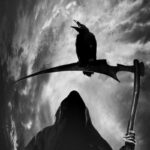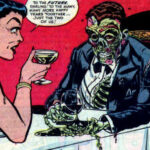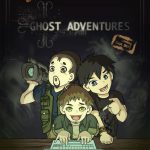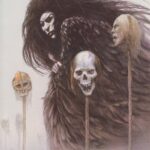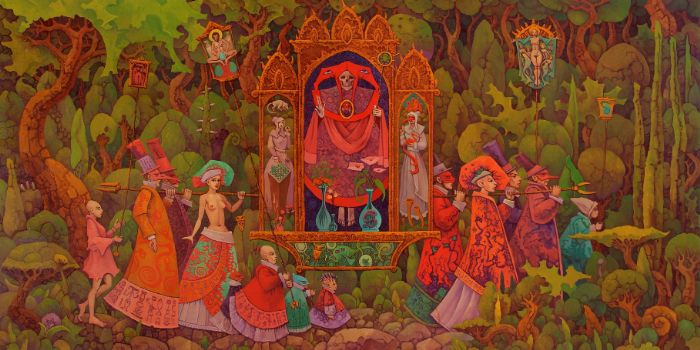
A Joker
To contrast with the normally dark and antagonistic classical depiction of Death, many comedies portray him as a somewhat sympathetic character, an average Joe who’s simply doing a necessary and unpleasant job.
The weapons of death
Considering that a human being was engaged in an agonistic struggle against death, military terminology prevailed in most descriptions. The struggle with death was characterized in physical terms, it was called “athletic competition”.
In paintings and other representations, Death the tyrant slaughtered thousands of people with various weapons such as spears, arrows, spades, scythes, maces and rakes.
The ghost
The ghost is the representation of someone who is dead. It may keep the recognizable form of the body that once lived or appears as something else. Yet, the ghost appears and disappears, is not bound by the laws of time or space, and is largely present in its absence. More about ghosts
The Four Knights of the Apocalypse
Death is one of the Four Horsemen of the Apocalypse that will storm the world as an episode of the Apocalypse portrayed by St-Jean in the Book of Revelation 6:7–8.[32]. The three others are pestilence, famine and war.
He is also known as the Pale Horseman whose name is Thanatos, the same as that of the ancient Greek personification of death, and the only one of the horsemen to be named.
And I looked, and behold a pale horse: and his name that sat on him was Death, and Hell followed with him. And power was given unto them over the fourth part of the earth, to kill with sword, and with hunger, and with death, and with the beasts of the earth. — Revelation 6:8, King James Version
Father Time
Another name, “Father Time” allude to the passage of time and the fragility of life. Clocks, hourglasses, sundials, and other timepieces both call to mind that time is passing, and frequently contain memento mori mottoes themselves. Similarly, a candle both marks the passage of time, and bears witness that it will eventually burn itself out. These sorts of symbols were often incorporated into vanitas paintings, a variety of early still life.
An animal
Certain animals such as crows, cats, owls, vultures, and bats are associated with death; some because they feed on carrion, others because they are nocturnal.
- An eagle because it has large wings and it will reach everyone even in the highest tower.
- An aries. “He has two horns, [and] with the large one he brings down the Caesars, kings, princes, popes, cardinals, patriarchs, bishops and great lords …… and with the lower horn death crushes people of the lowest estates, both clergy and laymen in the provinces, cities, towns and villages; flinging his horns into the four parts of the world, he does not bear in mind the age of any man”
- A poisonous bee: it comes invisible and kill softly in a second
- The Seven Whistlers, a flight of birds (usually geese or swans) that deal in ill fortune and death. If you hear all seven at once then its the end of the world. Jabez Allies (1846) writes:
“I have been informed by Mr. John Pressdee of Worcester, that the country people used to talk a good deal about the ‘Seven Whistlers’ when he was a boy, and that he frequently heard his late grandfather, John Pressdee, who lived at Cuckold’s Knoll, in Suckley, say that he oftentimes, at night, when he happened to be upon the hill by his house, heard six out of the ‘Seven Whistlers’ pass over his head, but that no more than six of them were ever heard by him, or by any one else to whistle at one time, and that should the seven whistle together the world would be at an end.”
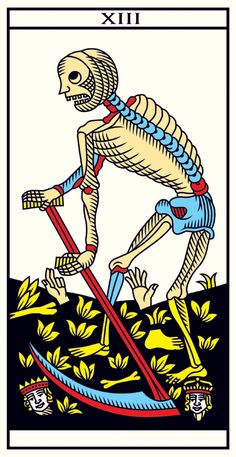
Death in tarot
The meaning of Death in the tarot is transformation, only acquiring its positive or negative connotations in conjunction with the suites.
In the seventeenth century the tarot deck was used in a popular and highly unesoteric card game known as tarocca, in one version of which the winner would invariably be whoever played the Death card; for it was considered nothing could stand against the image of Death.
Other incarnations of Death
King Death belongs to a wide family embracing the fourth Horseman of the Apocalypse, God’s “myghty messengere” (Everyman) calling humanity to moral account, and the courtly personae of hunters, falconers, and knights.
Later, vampires, zombies and other monsters emerged as representations of incarnate death.
In many icons of the resurrection of Jesus, death is portrayed as an almost naked man who is bound hand and foot lying amid the bones under the earth.
| You, Labourer who in care and pain Have lived your whole life Must die, that is certain… You should be happy to die, For it frees you from great care… To which the Labourer replies; Many long for death Not I! Come wind or rain, I’d rather be back in the vineyard again. The Guyot verses | 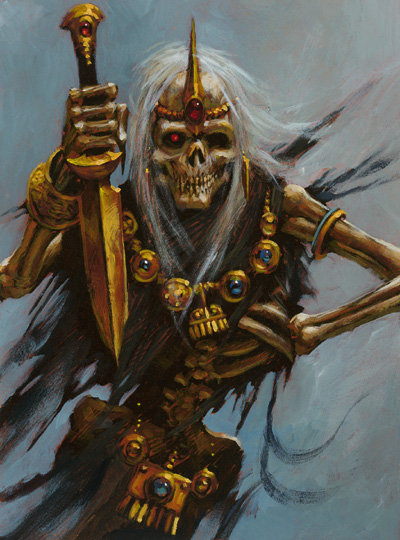 |

